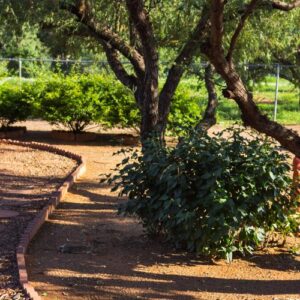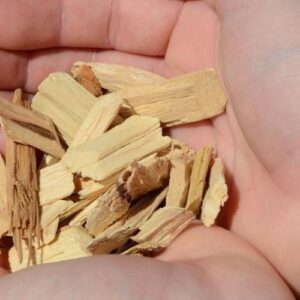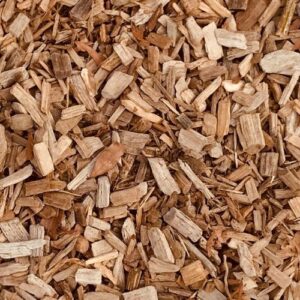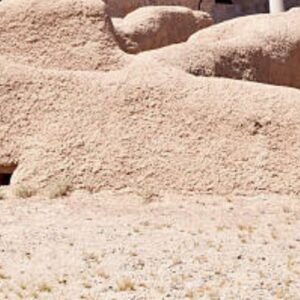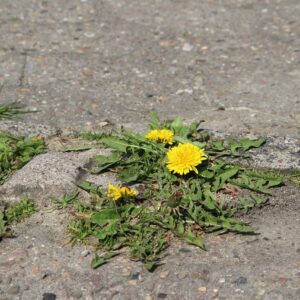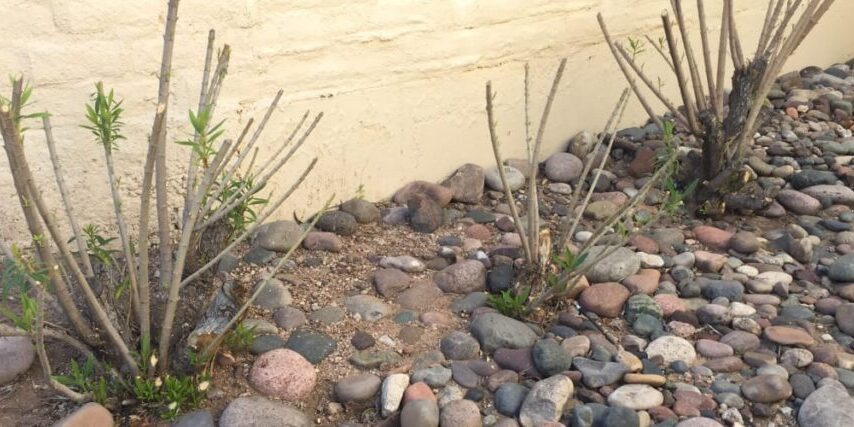
If you aren’t used to dealing with our native flowering shrubs, you might assume that shearing them (constantly cutting them into a particular shape, such as a rounded top or a cylinder) is the best way to manage them. After all, you see shrubs pruned like that all the time.
In actual fact, it’s one of the worst things you can do for our native shrubs, as it stresses the plant and, ultimately, causes it to require more water. It may also reduce the life of the shrub and cut down significantly on the number of blooms it produces.
The correct way to deal with certain (but not all) of our native shrubs may seem extreme, but the results speak for themselves. Every three years or so, shrubs like sage, bougainvillea, lantana and others benefit from something called rejuvenation or renewal pruning.
It seems extreme because you are basically cutting these multi-stemmed shrubs down to ugly-looking stumps (usually between 6 inches to 2 feet long). While this method of pruning can be deadly to single-stem bushes and trees (that’s why we never recommend or practice tree topping), this extreme measure can revitalize old, overgrown shrubs so that they look like new. Hence the name, rejuvenation pruning.
When pruned this way, shrubs start to grow back within a few weeks, healthier and more vibrant than they may have been for several years. You’re basically resetting the clock for these plants, and they definitely show it. You can see pictures of the entire process of rejuvenation pruning a Texas sage bush in this post from AZ Plant Lady.
Keep in mind, though, that most shrubs won’t flower quite as soon as the sage did, and you may have to wait a full year until new flowers form. This is normal, and it’s because some kinds of shrubs will only flower on year-old wood.
Once the rejuvenated shrub begins to regrow, some additional pruning of the new stems is needed to reduce crowding and to maintain the size and shape of the shrub. This is why we’re launching our landscaping program, to help you with maintenance projects such as rejuvenation pruning.
When Should You Do Rejuvenation Pruning?
Check out this handy pruning guide from Chandler to know what to prune when.
Most native shrubs like Texas sage are spring or summer-flowering and can be pruned this way in late winter or early spring, after the coolest months have passed. Be sure you know the correct time for your plant, however, as pruning at the wrong time can cause excessive stress to the shrub and it may not recover.
Keep in mind that rejuvenation or renewal pruning only needs to happen every 3 to 5 years or when the plant begins to look overgrown, has a significant decrease in flowering, or has many dead branches inside, underneath the top layer of growth and flowers.
Which Plants Should Not Be Pruned This Way?
As previously mentioned, only multi-stemmed bushes respond favorably to rejuvenation pruning. You should never prune a shrub with evergreen needles (like juniper or arborvitae) this way – it will not grow back! If a plant is in poor health from drought, disease, or pests, it may not survive rejuvenation pruning.
Cassias, arborvitae, rosemary, large lavender shrubs and junipers do not do well with rejuvenation pruning, so don’t attempt it on any of those types. Instead, they need more consistent pruning to be maintained. Contact us for more information on this type of pruning.
What Plants Benefit from Renewal Pruning?
Here are some of the native Arizona plants that might benefit from renewal pruning once they are older or overgrown, though it may differ on a case-by-case basis:
- Sage
- Dalea
- Bird of Paradise
- Bougainvillea
- Lantana
- Natal Plum
- Oleanders
- Xylosma
- Hop bush
- Creosote
How to Care for a Plant After Rejuvenation Pruning
While the benefits far outweigh the risks, rejuvenation pruning does still cause some stress to the plant, so keeping an eye on it is important. Ensure that it is well watered (especially once the temperature rises), apply compost if you have poor soil (although most of our native plants should be fine without any added amendments), and watch for any pests or diseases that might take advantage of the open pruning cuts.
Want to Know More?
For more information on rejuvenation or any other kind of pruning, contact us to schedule a consultation. You can also find more information in this handout from the University of Arizona Extension office – information on rejuvenation pruning starts on page 3.
Rejuvenation pruning is used everywhere, so while the types of plants may differ depending on where you live, the results are still the same. Read this article for even more general information on rejuvenation or renovation pruning.
See Our Latest Articles
More Articles Like This

Titan Tree Care is a full-service tree care company located in Anthem, AZ and serving all of North Phoenix. We offer a wide range of services to meet your tree care needs, including tree and palm trimming, tree pruning, tree removal, stump grinding, and more. We also offer insect or disease treatments and fertilization services. We are dedicated to providing high-quality, safe, and effective tree care services to our customers and work hard to ensure that your trees are healthy and look their best.



